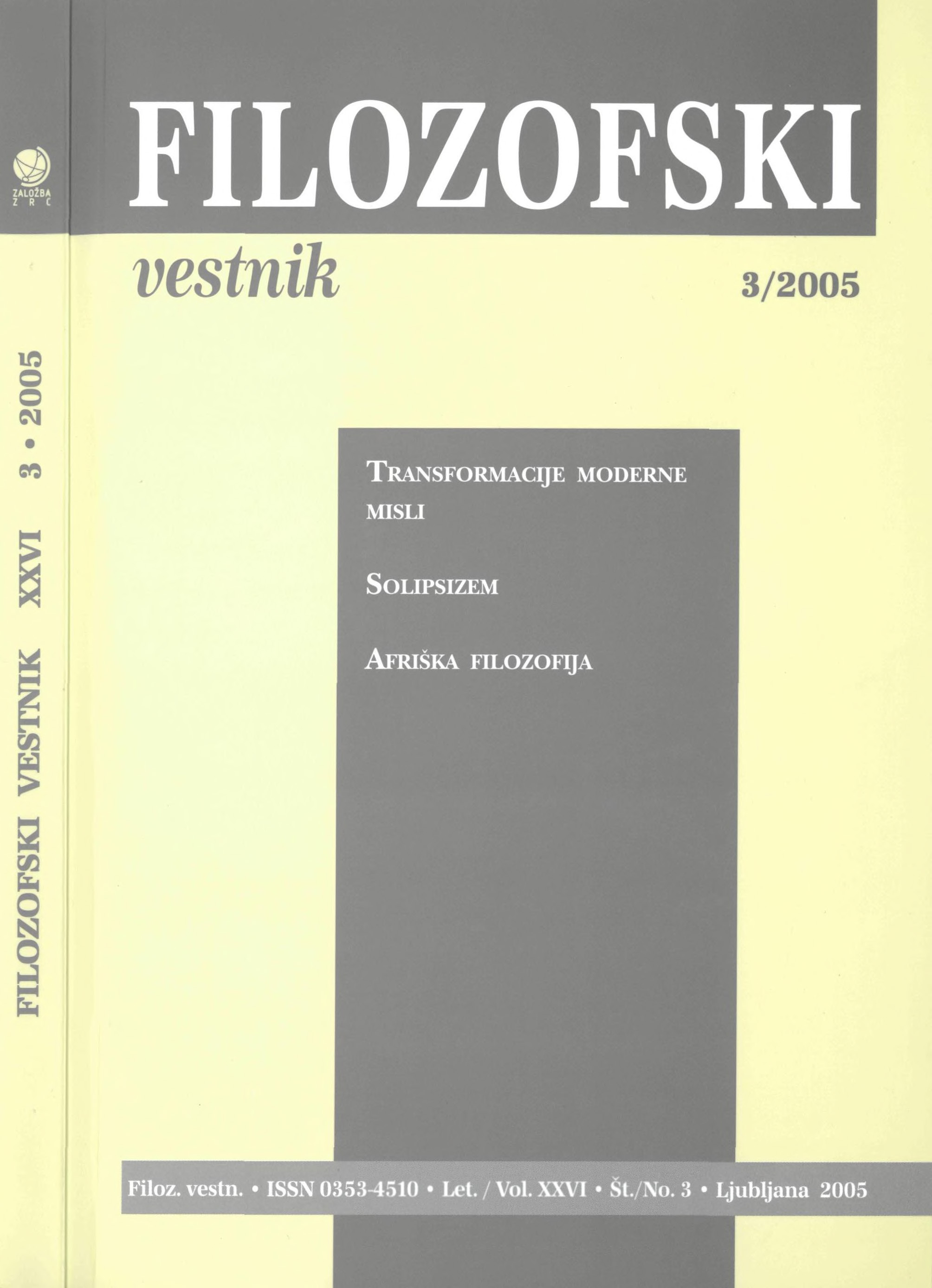Osiandrova epistemologija astronomije
Ključne besede:
Osiander, astronomija, hipoteze, demonstratio propter quidPovzetek
Osiandrovo besedilo Bralcu o hipotezah tega dela, ki je bilo dodano na začetek Kopernikovega dela O revolucijah nebesnih sfer, je dolgo časa veljalo za klasičen primer instrumentalističnega razumevanja znanosti. Osnovna poanta tega kratkega in nepodpisanega nagovora je, da je Kopernikova teza, da »se Zemlja giblje, Sonce pa je negibno sredi vesolja«, zgolj matematična oziroma astronomska »hipoteza«, s pomočjo katere je mogoče lažje izračunavati položaje nebesnih teles, ki pa – tako kot tudi druge astronomske »hipoteze« – ne odraža dejanske fizične realnosti vesoljnega ustroja. Avtor interpretira Osiandrovo besedilo v kontekstu standardnih epistemoloških zahtev 16. stoletja in skuša pokazati, da Osiander ni instrumentalist v sodobnem pomenu besede. Osiandrova epistemologija astronomije je refleksija nemožnosti astronoma, da se na podlagi opazovanj z Zemlje z gotovostjo odloči, kateri modeli realnih nebesnih sfer so dejanski vzrok premikanja posameznih nebesnih teles.Prenosi
Podatki o prenosih še niso na voljo.
Prenosi
Objavljeno
2016-03-05
Kako citirati
Vesel, M. (2016). Osiandrova epistemologija astronomije. Filozofski Vestnik, 26(3). Pridobljeno od https://ojs.zrc-sazu.si/filozofski-vestnik/article/view/4343
Številka
Rubrike
Transformacije moderne misli
Licenca
Avtorji jamčijo, da je delo njihova avtorska stvaritev, da v njem niso kršene avtorske pravice tretjih oseb ali kake druge pravice. V primeru zahtevkov tretjih oseb se avtorji zavezujejo, da bodo varovali interese založnika ter da bodo povrnili morebitno škodo.
Podrobneje v rubriki: Prispevki





